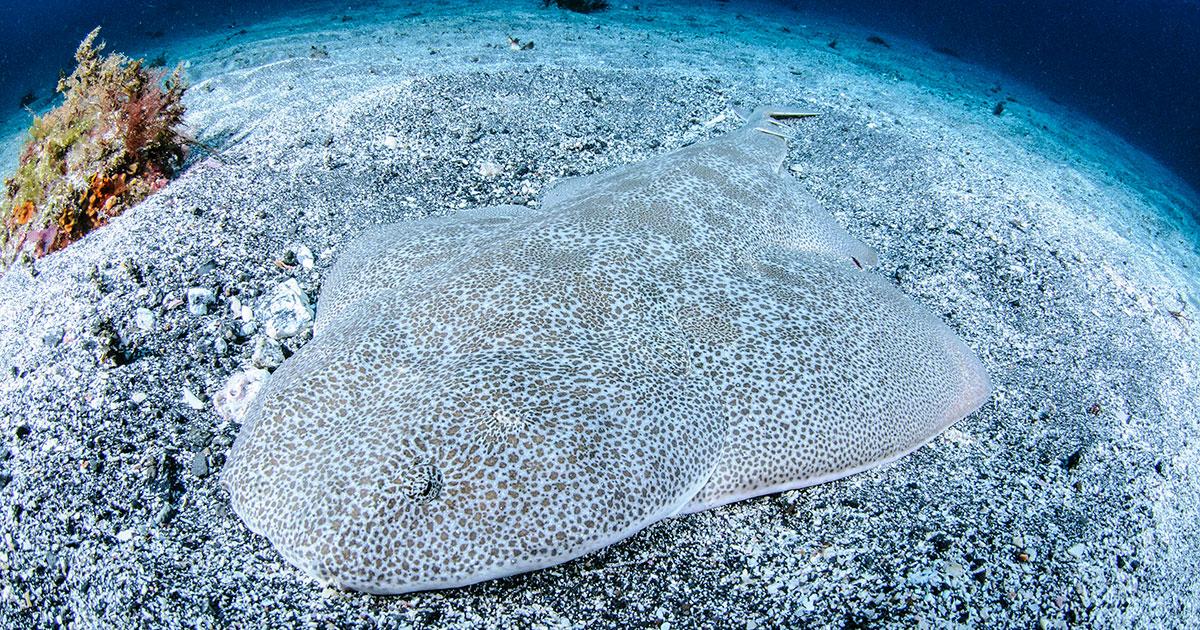The angelshark (genus Squatina) was once common throughout the coastal and outer continental shelf in the Northeast Atlantic, Mediterranean and Black Seas.
Today, due to intense fisheries and bycatch, this species is now labeled as critically endangered in the IUCN Red List of Threatened Species. Increasing fishing pressures along with the slow life history of angelsharks makes them susceptible to overexploitation, and characteristics such as late development and low reproductive levels impact the rate of population recovery.
The coastal waters of Brazil are rich in biodiversity and offers favorable fishing sites. In Southeast Brazil and Patagonian central Argentina, four species are found and overexploited in coastal waters: the spiny angelshark (S. guggenheim), the Argentine angelshark (S. argentina), the hidden angelshark (S. occulta) and the Atlantic angelshark (S. dumeril).
Fishing has been very loosely monitored in the past until The Federal Constitution was amended in 1988 to conform with the 1972 UN Stockholm conference on international environmental problems - this was a turning point in the expansion of international environmental politics. Although there are rules and regulations around the conservation of these species, the local fisheries regularly catch and market these animals, and monitoring is complicated due to a lack of information about catches and commercial sales.
Physical features such as size and shape (known as morphological information) has historically been the main method scientists use to identify fish, but this approach requires extensive training and experience. Identifying fish to the correct species level using this approach alone can also be extremely difficult, especially when species are closely related and share physical traits.
In a recent paper, published in Fisheries Research, scientists have found that new molecular genetic tools can be used to identify animals at a taxonomic level using techniques involving genetic DNA markers to identify specific genes, also known as DNA barcoding.
Ingrid Vasconcellos Bunholi, a student at the Federal University of Sao Paulo, Brazil, and a team of researchers have obtained breakthrough results which allow future conservation of these marine organisms. DNA extraction of 85 carcass samples were retrieved from Brazilian industrial fishing bottom trawlers between 2015-2016. Scientists used morphological traits to initially identify samples. Sequencing techniques were then used to compare similarity using a ‘similarity threshold’ of 99 percent to qualify for their results database.
Overall, the scientists found that all 85 individuals were genetically identified as shark with similarities between 99.73 percent and 100 percent. The majority of which were found to be the spiny angelshark (88.23 percent) as well as finding some specimens of the hidden angelshark (5.88 percent) and Brazilian guitar fish (5.88 percent). All three were on the Brazilian list of ‘Endangered Species – Fish and Aquatic Invertebrate.’
Over 90 percent of elasmobranch species (which include sharks, skates, and rays) are listed on the IUCN Red List with around 16.5 percent in the threatened categories and more than 40 percent listed as “Data Deficient” (IUCN, 2017).
Researchers have now started to use molecular markers to identify elasmobranch species to help reduce the risk of fraudulent labeling.
In the paper, the authors noted that this method “should be proposed as a standard procedure for identification of species in Brazilian fish landings and in the surveillance of commercial products along the production chain through the final delivery of fish products to consumers.”
Effective marine policy planning will have huge benefits for the conservation and biodiversity of the angelsharks. Implementing stricter regulations for fish identification will help to make long term conservation effects more effective, and DNA barcoding has proven to be a powerful tool in monitoring and conservation.
By Alice Walsh, Institute of Marine Sciences, University of Portsmouth (UK)



